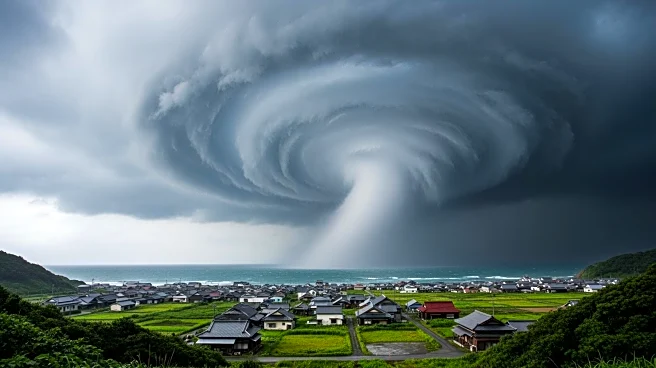What's Happening?
Japan has issued a tsunami advisory for Iwate Prefecture in the northern region of the country. This advisory follows an earthquake of magnitude 6.26 that struck off the east coast of Honshu, Japan's largest
island, which includes Iwate. According to NHK, the public broadcaster, a tsunami was observed 70 kilometers off the coast of Iwate Prefecture at 5:12 p.m. local time and is expected to reach the Pacific coastline soon. The wave is anticipated to be approximately 1 meter in height. Residents have been advised to stay away from coastal areas as a precautionary measure. NHK also reported that there were no abnormalities detected at the Onagawa nuclear power plant, which is operated by Tohoku Electric Power Co.
Why It's Important?
The issuance of a tsunami advisory is a critical measure to ensure public safety in the affected regions. Tsunamis can cause significant damage to coastal communities, infrastructure, and can lead to loss of life. The advisory serves as a warning for residents to take necessary precautions and evacuate if needed. The fact that no abnormalities were reported at the Onagawa nuclear power plant is reassuring, as nuclear facilities can pose additional risks during seismic events. The response to this advisory will test the preparedness and resilience of local emergency services and infrastructure in handling natural disasters.
What's Next?
Residents in Iwate Prefecture and surrounding areas will need to remain vigilant and follow instructions from local authorities regarding evacuation and safety measures. Emergency services will likely be on high alert to assist with any necessary evacuations and to monitor the situation closely. The government may also conduct assessments of infrastructure and public safety protocols to ensure readiness for future events. Continuous monitoring of the seismic activity and potential aftershocks will be crucial in the coming days.
Beyond the Headlines
This event highlights the importance of disaster preparedness and the role of public broadcasting in disseminating critical information swiftly. It also underscores the need for robust infrastructure and emergency response systems in regions prone to natural disasters. The coordination between government agencies, local authorities, and the public is essential in minimizing the impact of such events.












